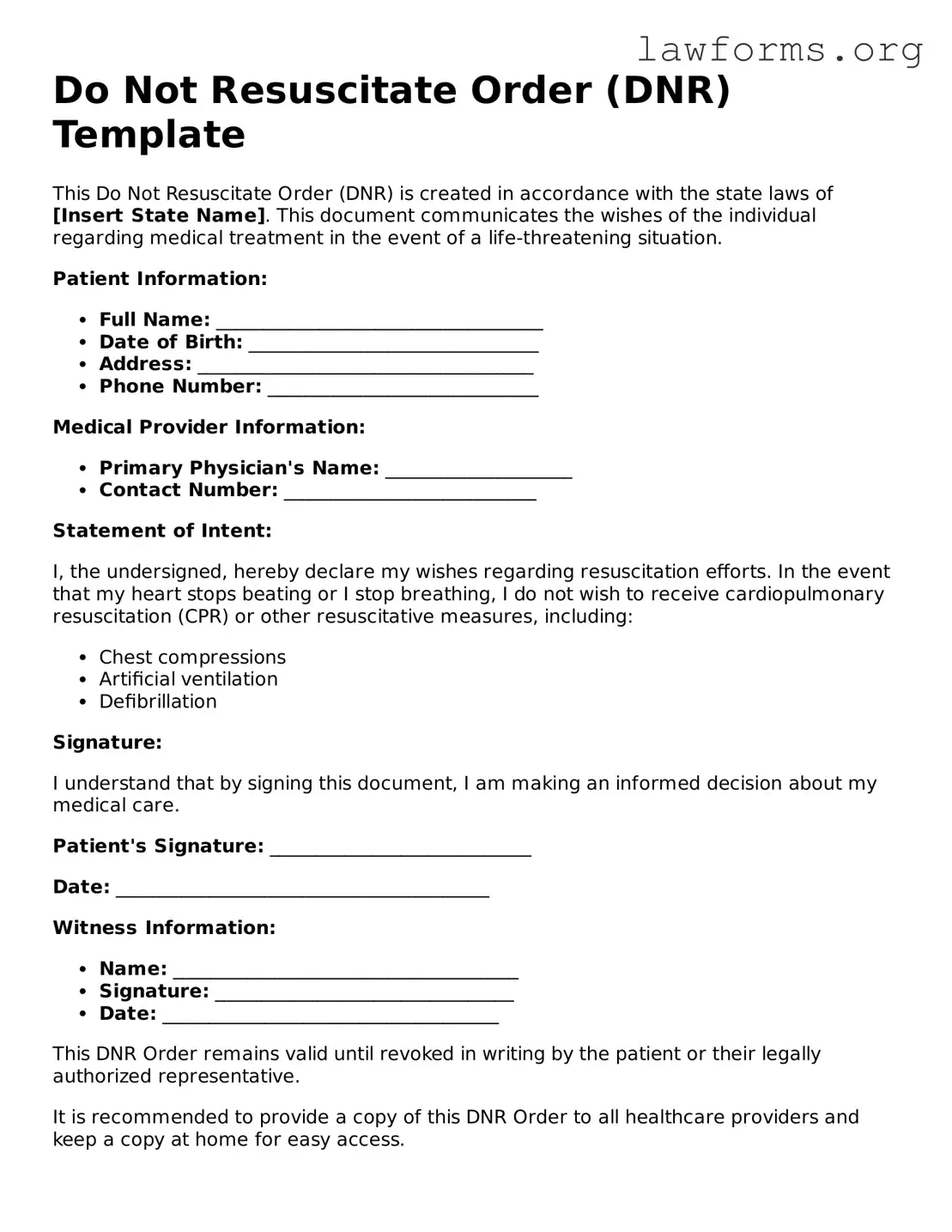Do Not Resuscitate Order (DNR) Template
This Do Not Resuscitate Order (DNR) is created in accordance with the state laws of [Insert State Name]. This document communicates the wishes of the individual regarding medical treatment in the event of a life-threatening situation.
Patient Information:
- Full Name: ___________________________________
- Date of Birth: _______________________________
- Address: ____________________________________
- Phone Number: _____________________________
Medical Provider Information:
- Primary Physician's Name: ____________________
- Contact Number: ___________________________
Statement of Intent:
I, the undersigned, hereby declare my wishes regarding resuscitation efforts. In the event that my heart stops beating or I stop breathing, I do not wish to receive cardiopulmonary resuscitation (CPR) or other resuscitative measures, including:
- Chest compressions
- Artificial ventilation
- Defibrillation
Signature:
I understand that by signing this document, I am making an informed decision about my medical care.
Patient's Signature: ____________________________
Date: ________________________________________
Witness Information:
- Name: _____________________________________
- Signature: ________________________________
- Date: ____________________________________
This DNR Order remains valid until revoked in writing by the patient or their legally authorized representative.
It is recommended to provide a copy of this DNR Order to all healthcare providers and keep a copy at home for easy access.
